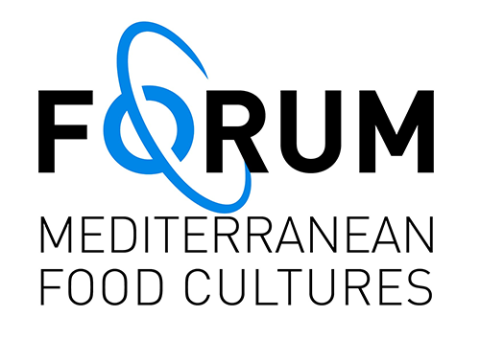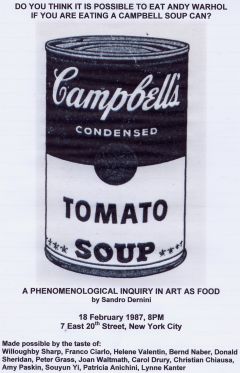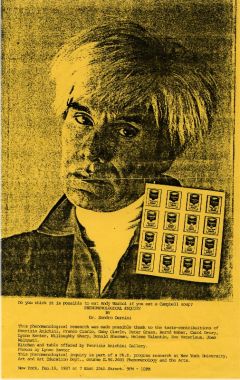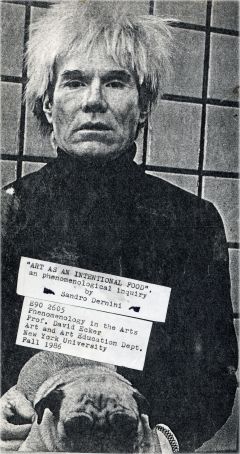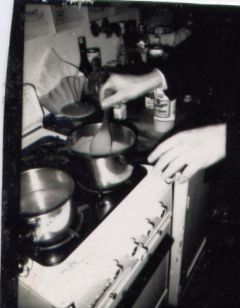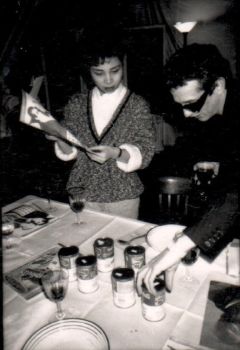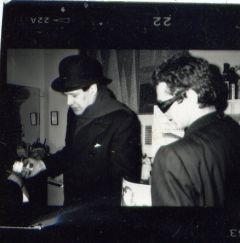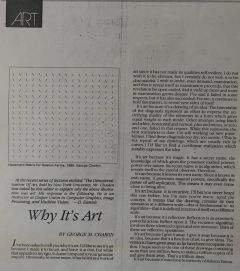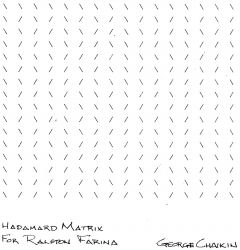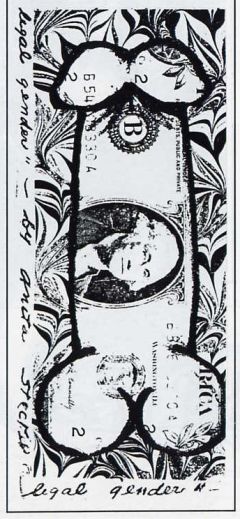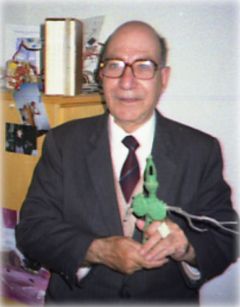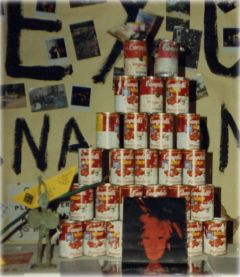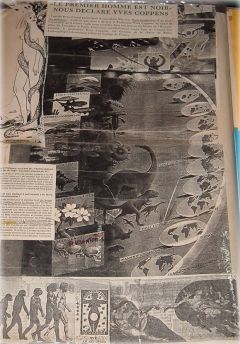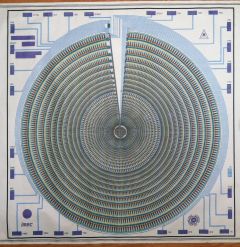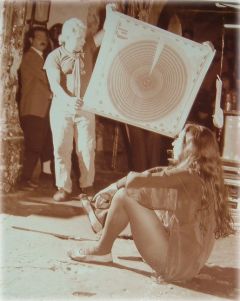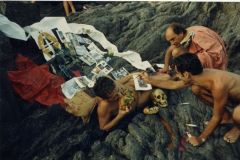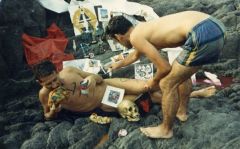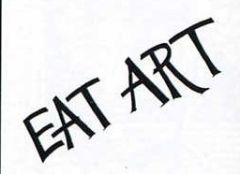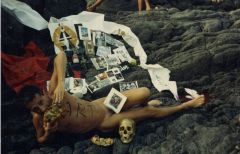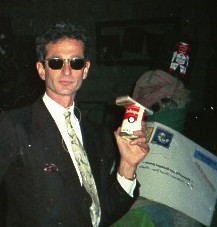On 18 February 1987, in New York, at the Patrizia Anichini Gallery, I RITUALLY performed
DO YOU THINK THAT IT IS POSSIBLE TO EAT ANDY WARHOL BY EATING A PLEXUS CAMPBOLL'S SOUP CAN?
as an aesthetic inquiry for my PhD course E90.2605 on Phenomenology and the Arts at New York University, directed by prof. David W. Ecker.

Invited artists were Willoughby Sharp, Helen Valentin, Bernd Naber, Franco Ciarlo, Donald Sheridan, Peter Grass, Lynne Kanter, Souyun Yi, Carol Drury, Amy Paskin, Christian Chiansa, and the host Patrizia Anichini.
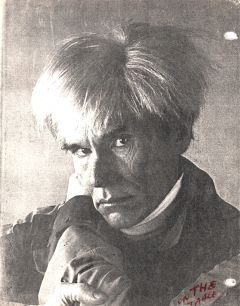
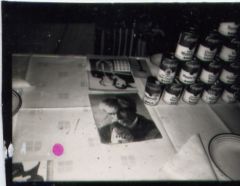
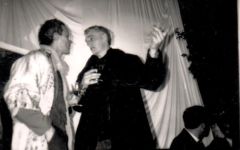




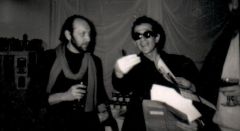
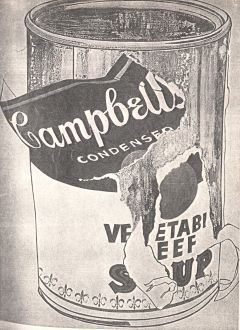
I prepared a questionnaire to be filled by participant artists after having cooked and eaten a Campbell's soup can. Seven questions I posed in the questionnaire, conceived for my phenomenological performance upon my NYU PhD course on Phenomenology and the Arts and my PhD reaserch study on "ART AS FOOD".
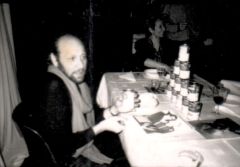
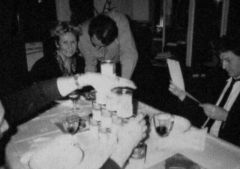
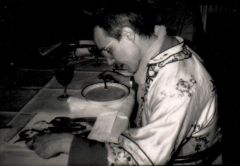
QUESTIONNAIRE
Do you think it is possible that you have eaten Andy Warhol when before you have eateen that Campbell soup two minutes ago?
- Suspend your belief before to answer to these questions. Answer: yes or no?
- What you mean?
- How do you know?
- How was the taste?
- Is it true or not?
-
Who was the subject? Who was the object?
- Description of the experience


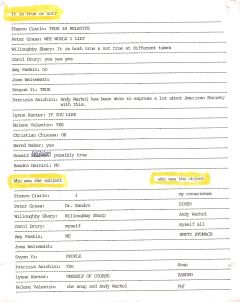
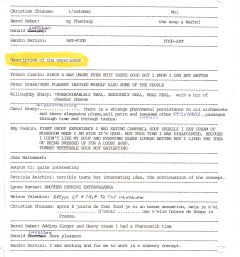


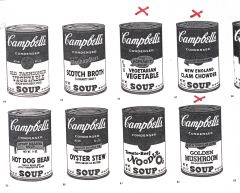
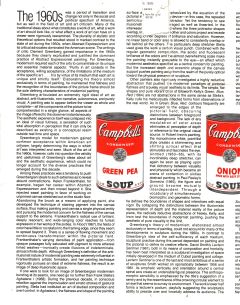
From the artist answers to the questionnaire, the majority of believed they “ate” Andy Warhol dematerialized.
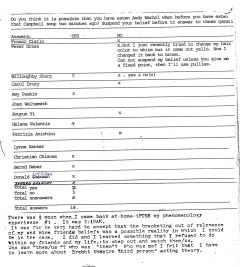
WERE WE CANNIBALS?
I prepared my phenomenological performance, by being inspired for moving forward my NYU Ph.D inquiry on "ART AS FOOD", by the symposium The Dematerialization of Art, organized the day after at New York University by Angiola Churchill and Jorge Glusberg, co-directors of ICASA (International Center for Advanced Studies in Art), where I was working as a graduate assistant of prof. Churchill, chair of the NYU Art and Art Education Dept.
"Heisenberg's Uncertainty Principle of 1907 with its recognition that the behaviour of the atom could not be predicted proposed a new reality that the artist has only begun to grapple with. What is the status of art if a discernible reality no longer exists?
Advanced technology has vastly expanded the human sensorium. What results from this increase of information largely depends on the interpretative abilities of the artist.
Scientific breakthroughs have presented not just a new version of reality but also of time and space.
What significance this will have for art cannot yet be said but we are clearly on the brink of the most extraordinary leap in human perception".
(From the brochure of the Symposium on The Dematerialization of Art, International Center for Advanced Studies in Art, New York University, 1987)
Few nights after, on 22 February, Andy Warhol died!

At the opening of the Symposium, Lenny Horowitz and Stephen Di Lauro, two Plexus historical players, by reporting from the floor the Sandro's performance, questioned the panelist about this potential dematerialization of Andy Warhol into a Campbell's soup can.
NYU, ICASA SYMPOSIUM TISCH AUDITORIUM, FEBRUARY 1987
“A Question to the Symposium on the Dematerialization of Art”
Art has its roots in ritual. We have only to look at the works of early shamans drawn on the walls of caves at Altamira and Lascaux. In addressing the idea of the dematerialization of art, aren’t we really taking about ritualistic art which cannot be repeated or preserved, setting aside for a moment the question of documentation, which is really a tool for raising capital. Take it a step further: the dematerialization of art is really ritual for the sake of ritual. Last night Sandro Dernini asked if when eating Campbell’s Soup, we are eating Andy Warhol—spoofing, if you will, the Christian communion ritual. This idea of concept of dematerialization as ritual is even further underscored in a performance, say, where 13 people gather to eat Campbell’s Soup. The soup has dematerialized into the stomachs of the participants and the gestures and words of those gathered have dematerialized into the air, not to be repeated again word for word, slurp for slurp. So the ritual dematerializes as it takes place. Dance, theatre—these stem from a need to ritualize, or make repeatable, certain words, movements, gestures. Another example, even more appropriate to the point I’m making raising this question with the panel, is the Plexus Art Operas, where hundreds of artists gather together to perform a theme. Dance, theatre, musical performance and visual arts are all combined here with the central idea of a modern sacrifice – sacrifice being an art ritual, of course. Bur the modern sacrifice of sacrifice, the end of ritual, really. So in talking about the dematerialization of art, aren’t we really talking about the demystification of ritual, the end of ritual. The impulse to include the audience, as in the happenings and the Living Theatre, is really the impulse of make shamans of us all, audience and artists alike. So, do you or do you not agree that the dematerialization of art is really art for the sake of demystifying, or even doing away with ritual, by making art? Whose Serpent? Who is the Serpent? Stephen DiLauro
Nam June Paik, among the speakers, answered believed possible that Andy Warhol had been dematerialized through the artist intentional act of eating his commodity art symbol.
The panelists were Jean Baudrillard, Donald Kuspit, Vito Acconci, Nam June Paik, Judy Barry, Dennis Oppenheim, Billy Kluver, Nancy Holt, Paul Taylor, Bruce Breland, Flor Bex, Rene Berger, Eika Billeter, Alan Bowness, Julie Lawson, Hervè Fischer and George Chaikin.
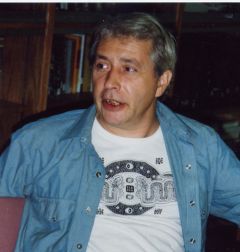
Hadamard Matrix Why it is Art
by George Chaikin, 1987
The Dematerialization of Art Symposium, ICASA International Advanced Studies in Art, New York University 1987
I’ve been asked to tell you why it’s art. I’d like to say it’s art because I made it to be art, and leave it at that, but while that appeals to my ego, it doesn’t respond to your genuine inquiry. Obviously, in some sense, it has failed as a work of art since it has not made its qualities self-evident. I do not wish it to be obvious, but I certainly do not wish it to be obscurantist. I wish to invite, even demand, examination, and that it reveals itself as examination proceeds, that this revelation be open ended, that it yield up more and more as examination grows deeper. I’ve said it failed in some respects, but it has also succeeded. For me, it continues to hold fascination, to reveal new sides of itself.
It’s art because it’s a drawing of an idea. The bimodality of the diagonals represents an effort to express the underlying duality of the elements in a form which gives equal weight to each mode. Other attempts using black and white, horizontal and vertical, plus and minus, or zero and one, failed in this respect. While this represents the best realization to date. I’m still working on new possibilities. I find these diagonals too dry, too ascetic. (This is not typical of my drawings, which are usually rich in curves.) I’d like to find a curvilinear realization which suitably expresses the idea.
It’s art because it’s magic. It has a secret name, the knowledge of which gives the possessor exalted powers, power over nature. Its secret name is its algorithm, which reveals itself to be careful observer. Therefore…
it’s art because it knows its own name.. Since it knows its own name, it possesses magical powers, specifically the power of self-replication. This means it may even come close to being alive.
It’s art because it is recursive. I’ll bet you never heard this one before, but I’m sure you’ve encountered the concept. It means that drawing contains its own reiteration at a different scale – this is fundamental to its algorithm – that it is defined in terms of itself on a different scale.
It’s art because it’s reflective. Reflection is an extremely powerful action. Reflect upon it. The recursive algorithm involves three identical copies and one inversion. Both of these are reflective operations.
It’s art because I give it away. I give it away because it is anidea, because yjay’s function of art, ti give ideas. The versions I have giving away so far been too sparse, too thin. I hope soon to do of these drawings containing more that one million lines, to make a million copies of it and give them away. That’s a trillion lines.
It’s art because it was done in memory of Ralston Farina
THE PLEXUS CIRVILINEAR GEOMETRY OF CONSCIOUNESS
In 1986, at the Plexus Art Opera n.3 "EVE- Escaping from Anno Domini" on board an art slaves ship, hundreds George's Hadamard Matrix copies were given away by Stephen DiLauro, acting as Lorenzo de' Medici, throughing them out the,m together with copies of the penis legal gender dollar by Anita Steckel while artists were sold in auctions were bought by the Royal ArtWorld Family.
Storyline Plexus Art Opera n.3 "Eve, Escaping from Anno Domini on board of an Art Slaves Ship" 1986, NYC
Let me introduce myself in the first person,
I am Plexus 23s , aka Dr. Sandro Dernini

I have a double identity, I am a Plexus artist, as well as, I am a scientist.

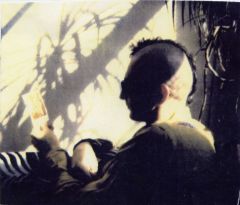

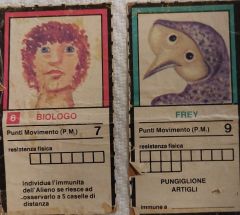
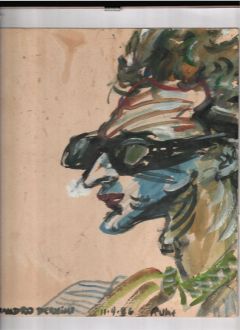

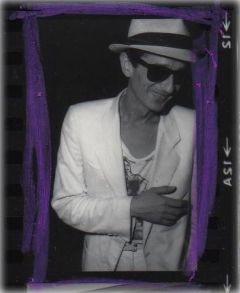
As a scientist, in 1974, I got my university degree (laurea) in Biological Science, at the University of Cagliari (Sardinia), and in 1997, I got my Ph.D. in Art Education, at the New York University.
Since early 90’s, I started to foster an enduring transdisciplinary dialogue among international scholars from different fields, connecting the well-being to the Mediterranean diet, sustainable diets and food sustainability. I published many peer reviewed scientific articles, books, and organized many international conferences and projects with United Nations and Intergovermental Organizations, including three World Conferences on the Revitalization of the Mediterranean Diets, in 2016 in Milan, in 2019 in Palermo, and in 2022 in Bari.
I have also a double cultural identity: I am “Sardo” (from Sardinian) and Italian. My nationality is Italian but my culture is "Nuragic", the bronze age civilization of Sardinia.
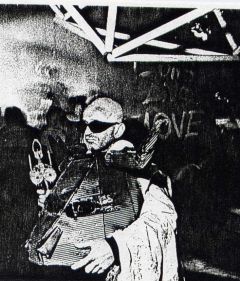
I discovered my Nuragic identity, in August 1984, in a burned building, at 523 East 6th Street, in the Lower East Side, where I was living, when prof. Raimondo De Muro, an old Sardinian friend of my family, knocked to my door, in the second floor with ruined stairs to go up to ask. He told me about the ancient oral tales of the Nuragic people of Sardinia, that did not known.
In the island of Sardinia from 1500 B.C. to 800 B.C. there was a bronze age civilization, called Nuraghic. It was a very complex social society which built a system of 17.000 stone towers on the
Prof. Demuro asked me to support him to find in New York a publisher for his book "I Racconti della Nuraghelogia". I was totally fascinated by his speaking on my forgotten Nuragic Sardinian heritage. Then, I introduced him to Stephen DiLauro, a playwriter living next door, and frequent at the Shuttle Theatre in my basement building. I knew that Stephen was very attracted by Robert Graves' White Goddess and by mysteries of the ancient world.
 Stephen liked it and wrote an introduction to the English De Muro's book synopsis, entitled “The Towers of Power”, about synchronicity, UFOs, and “cosmic net”, questioning if thousand stone towers of varying heights exit, as the remains of a bigger ancient network could be the center of an interplanetary communication network of a universal memory.
Stephen liked it and wrote an introduction to the English De Muro's book synopsis, entitled “The Towers of Power”, about synchronicity, UFOs, and “cosmic net”, questioning if thousand stone towers of varying heights exit, as the remains of a bigger ancient network could be the center of an interplanetary communication network of a universal memory.
In the summer of 1987, I organized in Sardinia, the first Art Slaves Market Show as Plexus Art Co-Opera n.4 "The Serpent of Stone", as continuation of the Plexus Art Operan.3 "Eve, Escape for Donna Purgatatorio from Anno Domini", held in 1986 in New York as a metaphoric art slaves boat art journey escaping from the New York Art World control.

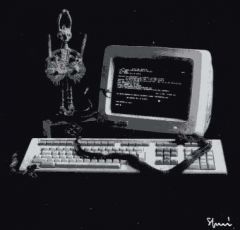
Photo Stefano Grassi
In the November 1987, while the traitional market collapsed, instead the art market had a very strong landmark sucess, for 53.9 million dollars it was sold the Van Gogh’s painting Irises, with a controversial, under the table, insider loan participation of the same auction house Sotheby to the buyer. Tis sale set a world record at that time for the highest price ever paid for a painting!!
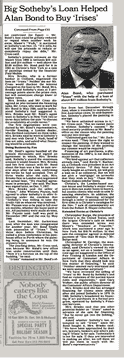
In New York, on February 20 of 1988, on the occasion of the first anniversary of my 1987 dematerialization performance of eating Andy Warhol, I ritually performed the Plexus happening “An Art Redefinition of a Campbell Soup Can”, in the dried swimming pool of CUANDO Cultural Civic Center, in the Lower East Side. I organized it as a Plexus report to the Lower East Side community, about developments of the Plexus journey of the art slaves boat, two years after its departure from the “Eve” art opera, its landing in 1987 in Sardinia and its planned arrival at the House of the Slaves of Goree, Dakar, in December 1988.
I staged it as a recall of my 1987 Andy Warhol ’s Dematerialized inquiry. this time I was inspired by a second ICASA symposium, The Redefinition of Art in the Collision of Cultures in the Post-Modern World, held in the same period at New York University by ICASA..
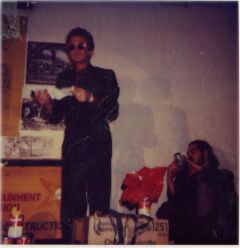
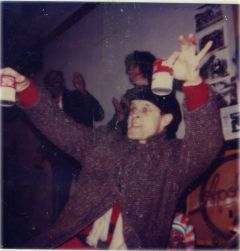
Barnaby Ruhe


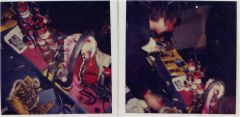
PLEXUS ART REDEFINITION OF A CAMPBELL SOUP CAN
In September 1988, for my birthday,with a party in a loft in Soho, I presented 100 Plexus Campboll's Soups Cans Labels, Made in the 80's for the 90's, as 100 Limited Editions, printed for me by Ram Studio of Maggie Reilly.

What does a PLEXUS Can look like?
It looks like an Andy Warhol's Campbell soup can, if it is exposed to a beholder of the artworld. Its label is red and white. The "e" of Campbell is changed to an "o" in Campboll's, It has a central circle with the words "Dematerialized Andy Warhol" and Andy Warhol's face which hold the center of attention. On its bottom the word PLEXUS.
It has a cylindrical form, balanced symmetrical design, a spatial organization with 2 red and white rectangular units, with written messages:
“DIRECTIONS: EATING ART and "INGREDIENTS : HISTORY OF MODERN ART, VOLUME 1- FOODART INTERNATIONAL".
Below Direction: Time Capsules Art. LTD 100 of 100. PLEXUS 23S Soup Sardinia Export. Printed in the USA
Below Ingredients: Ram Studio Inc - Designer R. Kern. New York, 5/88 AD.
The expectation as manipulation of mental imagery is a central referential step of the analysis. Changing "e" to "o" in the word Campboll’s prevents the Plexus Can being confused with a Warhol's can and with a simple Campbell’s can.
Both light and distance influence the reading of the outside codes of the object whether it is read as "e" or "o", whether you see or you do not see the glued-on penny painted as money art. The angle from which the object is viewed determines the perception of the object either as an original artwork by Plexus23s, or by Andy Warhol or a simple Campbell can.
Plexus Interpretation is not static. It is formed by the momentum of the rhythm of our experience and of its correlations. Each reader has his/her own angle of interpretation depending upon his/her personality, education, and culture. No method can transcend the interpreter's own historicity.
INGREDIENTS
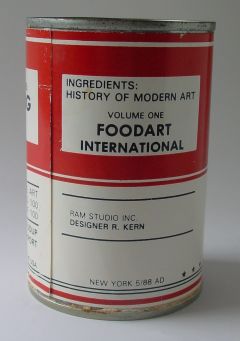
What does a Plexus Campboll’s Soup Can contain?
MY PHD NEW YORK UNIVERSITY AESTETIC INQUIRY INTO THE PLEXUS BLACK BOX
Sandro Dernini, Doctor of Philosophy, 1997
Major: Art Education, Department of Art and Art Professions
Title of Dissertation: A Multicultural Aesthetic Inquiry Into "Plexus Black Box,"
An International Community-Based Art Project.
Directed by: David W. Ecker
"Plexus Black Box" was a conscious act of recall of the struggle of the artists in the community, who are running ahead toward their own future. While the dissertation was about the past and is thus historical, it is also about the present and the future of Plexus.
"Plexus Black Box" materially consists of records and relics of Plexus history and performances. Many records consist of compiled images made as frames of reference or "quotes" of other records. Over the years Plexus events have built one upon the other. Each event takes place in its own present but it is made up of past concepts and activities while it projects its own various parts into the future activities of Plexus.
ABSTRACT
This study is a multicultural aesthetic inquiry into the "Plexus Black Box," a community-based international art project.
The collaborative art project under study, "Plexus Black Box," is related to a series of art events held in several communities around the world, beginning in 1982, engendering a spirit of cooperation and bridging the gap between universities and local communities.
The focus of Plexus is to raise the consciousness in the world community about the interdependencies of the arts, the well-being of individuals, and the reconciliation of cultural differences, through the extention and interaction of collaborative art events, bringing the community and the academy closer together, and linking the notion of "art" - as a culture-bound aesthetic experience - to the concept of "well being" - as a multicultural paradigm enhancing the quality of life in the community.
INGREDIENTS
HISTORY OF MODERN ART
VOLUME 1
FOODART INTERNATIONAL
FOODART is a High Electromagnetic Intentional Food by Plexus International
THE HISTORY OF PLEXUS 1982- 2024
In 1989, in Dakar, by ponting out the controversial case of the 53,9 million dollars for the Van Gogh's painting Irises, I presented the Plexus project for the opening of an Art World Bank in the House of the Slaves in the Goree island , created and managed directly by the artists in the first person, in order to survive and to resist to the economic-political control of the artworld of the Western market. As an example of the historic struggle of all artists in life, by recalling the poor economic life of Van Gogh, I underlined the need for all artists to survive and the value of art as a sustainable resource for the community. In this context, the House of the Slaves of Goree was for Plexus International the symbol of existing contemporary forms of slavery and the art trade market was part of it. I stressed that behind any work of art, traded as a commodity, there was a human being, the artist who needed to be defended by a new contract of art that he proposed to be negotiated and signed in Goree, as first milestone of the future Art World Bank that then in 1996 was launched formally by Plexus International on the occasion of a special event organized in Rome in the context of the first World Food Summit.

The content of a Plexus Campboll's Soup Can changes from one Can to another Can.
It depends upon the related circumstances under which a Plexus Can is made. What is inside this can is also an element of ambiguity of this art work.
What is inside this can is also an element of ambiguity of the work under study.
How will you open it?
The curiosity to open it, and the motivation to do it, will create the need of opener, as a method of reading, a system of intelligibility.
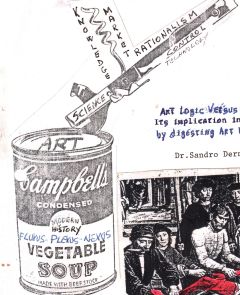
The expectation, the beholder's share, if the person is related to the art world, will transform an ordinary object, a Campbell Soup Can, into an artistic object, a PLEXUS Campboll’s Soup Can.
Plexus Can as an open work of art depends upon its community of beholders, formed by the momentum of the rhythm of that specific experience and of its correlations with my own in the first experience of this momentum.
Interpretations of clues are made by systems of intelligibility which are made by codes. Clues are supposed to be read as information. One of these clues is "Direction: -Eating Art". Another one is "Dematerialized Andy Warhol".
First question, how do we eat art, and if we eat art how do we digest it? Second question, how do we eat Andy Warhol dematerialized, and if we eat Andy Warhol how do we will digest him dematerialized?
Plexus Can functions within a ritual art performance environment depending upon the community of beholders, and their art references.
The Plexus Can, within its art altalr environment, is an intentional "bewildering image" of a work of contemporary art.
The expectation, the beholder's share is the keyplayer in the Plexus artistic process by transforming perception of PLEXUS Campboll's Soup Can into a historical contemporay artwork.
To start I applyed my 1988 NYU Course on Aethetic Inquiry, with David W. Ecker, for understanding art definitions, categories, styles, ArtWorld notion, and its exclusive priviledge of conferring the artistic identification, the status to be an "Artist".
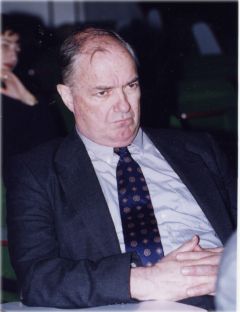
ART DEFINITIONS, CATEGORIES, AND ART MARKET:
NAMED IT "ART-SLAVER-ISM"
From the essay The Artworld by Arthur Danto: " to see something as art requires something the eye cannot decry-an atmosphere of artistic theory, a knowledge of the history of art: an artworld. Andy Warhol's Brillo boxes, because they were made by a person with an "artistic identification" belonging to an artworld, made
them "Art".
An artifact can acquire the status of a candidate for appreciation within the system that Danto has framed and explained as "The Art World".
For instance, Duchamp's "Fountain" is not just a misplaced urinal, as Arthur Danto wrote, " Once one accepts the possibility that a Brillo box by Warhol is a work of art, while an ordinary Brillo box is not, it is plain that the differences are not of a kind that meet the eye, and that the phenomenology of perception cannot be appealed to effect the differences, which are philosophical. The point is that Warhol's box acquires, in virtue of'being art, properties ontologically unavailable to its counterpart, and the problem of the philosophy of art is to explain not just how this is possible, but what the status of these properties is, in as much as the properties would not be present to the eye if you did not know you were looking at a work of art "
Each analysis of an art work has its own historical world related to a particular time and space.
What you will see, as virtual content of that specific Plexus Campboll's Soup Can Limited Editions, is an artists time-space, a PLEXUS place, dissociated from current mundane art world environment under market control.

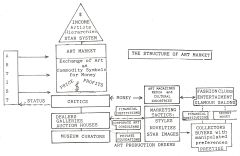
DIRECTIONS
EATING ART
ART IS A BIOLOGICAL NEED FOR OUR EVOLUTION

In the Evolution of the Homo Sapiens corpus, Biology and Culture are interconnected by the genetic capacity to modify, convert, and transmit metabolic ionic charges as cultural messages.
Many factors of Culture and Biology are crossing over as part of a whole socio-biological organism, in which also the individual body and mind are genetically interacting together and in interdependence.
The human being is made by an integrated system of body and mind, a sociobiological organism absorbing and transforming “energy”, which provides necessary ionic charges for it sociobiochemical moves.
These ionic charges effect the recombination of many conductive chemicals in solution in the human body, during the physiological process of transformation from “Matter-Food” into “Energy”.
The ionic recombination supply the recycling “Energy” for the human body to exist and to think.
Through networks of differentiated cells in communication together by interactive systems (Plexus or Charas) this “Energy” is responsible of the sociobiological information and its genetic transmission.

The human being like the physical world, with all its animate and inanimate realities, is made in space and time, by ionic transformations of differentiated states of “Energy” as “Matter”.
In both the human and the physical world diversity in forms and behaviors is only a phenomenological effect of the atomic crystal configuration on which the micro and macro realm of the Reality is build.
The whole Reality in which the human being lives is time-factored by energy configurations and transformations of the ionic crystal mask of “Matter” from the computer silicon chips to the physiological sodium pump of the human cellular membranes, from the snow to the rocks of the mountains, from the DNA of the chromosome to the bones of the skeleton, from thinking to conversation.
The solar PLEXUS is a complex of PLEXUS, CHAKRAS, connecting billions and billions of individuals cells as a whole living organism, the human being, able of reproduction, of growing, of modifications of thinking, and transmitting culture.
Time is the 4th dimension of space
One Nanosecond Is a billion fractions of one second. It Is the time with what are working our logical computers, It Is the time measured before to be able to think It. It Is the a-rational time that exist before Its thinking, and Its cartesian dependence of "Coglto ergo sum"
Time-Space" has changed "Logic"
"Art" as "Energy-Information" as a sociobiological Know How, have the capacity to develop its own socio-biological communication, able to perceive and transmit the immunological code of the human being, speaking as the dolphins, mammalian like are doing with their sonar, by quantum of energy, directly from their pulsar charges. -
The consumption of “Art” by the human corpus can be conceived as a digestion of “Food”, by which the corpus is nourished by art, participating in the general metabolism of the human corpus.
"Art" can be the Environmental Radar for a future sociobiological navigation towards New Worlds as Marshall MacLuhan foresaw.
"Art" can see beyond the unilinear-rational horizon of pragmatic schools or controlled markets, like Albert Einstein's curved Time-Space concept, which posed the attention to the curved space, and of the use of the Time as the 4th dimension of the curved Space, where, micro and macro, positive and negative, ying and yang, and two parallel lines meet In the Infinity.
If "Time-Space" Is "Infinity", may be there Is where the logical binary system of the "concept of Art" will meet with the non predictable quantum of "Energy" crossing the phenomenological physical separation between body and mind.
"Art" as "Energy" as "Time-Space" can be concised in one whole organism, In one vibrating non continuum quantum of "Matter", In Evolution, only Imperfectly perceived and divided by positivist theories with Its "Isms" or systems.
PLEXUS FOODART INTERNATIONAL
Through art digestion and its metabolic ionic process , providing”ARTEnergy” for the vital activities of the human corpus, Plexus FoodART will be connected, through all its cellular parts, by the SOLAR plexus networking system of blood vessels, lymphatic fluids, nerves and immunological messangers.
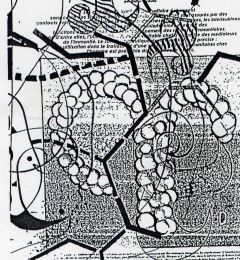
Immunological Art Messemger Inteleukine 2 by Gaetano Brundu
"Eating Art" concept, in Plexus, since 1986, is associated with the artistic representation of the molecular model of the immunological cellular messenger Interleukine 2, IL2, made by Gaetano Brundu, who explored, with a series of drawings, named "Les Messangers," the encounter between immunology, art, and the survival of connected forms:
In the middle of the 80’s came the encounter with the Interleukine 2 or better with the image of its molecular model elaborated in the laboratories of the University of Paris VI and published in the monthly French journal La Researche in the May 1986.
That image, made by Rimsky e Norris, represents one of the plausible configurations of the IL2 (Interleukine 2) in the space.... The image of that model of IL2 I have put next that of my “baffo” (moustache), they have interacted in various ways in my pages,...
The general title of my operation was the same title of the article of La Recherche: ” Les Messangers de l’Immunitè.”
I was intrigued enough by those images very similar to mine “baffo,” that appears suddendly on the panorama of science, connected to the mechanisms of immunity that are inner most mechanisms in defence of the organism. Also there a sign of strong vitality that I believe is at the bottom of the mistery of life and of the survival of beings and of species. The mistery of my fantasy solidified, the animal pregerminal vitality and the intimit defence found themselves in my creative work, in my fantasy over a distance of years.
From an other side I was intrigued by the same mystery that took care of the genesis of certain forms and images, the encounter between gesture from which was born my first moustache and the systematic methodology of scientific research that brought me the ìplausibleî model of that molecule.over crossing relationships between "Art", "Energy" and Biology. In a physical reality that cannot be reduced or framed to or by a predicted logical theory.
FOR OPENING A PLEXUS CAMPBOLL'S SOUP CAN NEEDS A METHODOLOGICAL READING
The Plexus Compressionist Curvilinear Nuragic Deconstruction Approach
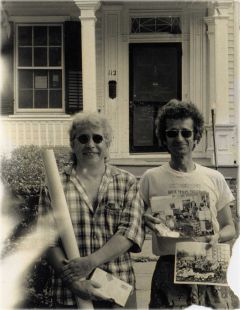


The Plexus Art Slavery Manifesto Group Photo Shots compressionist process actually contains duplicates of other group photos, which contain duplicate of other photos of Plexus historical art journey and so on more; The first frame also refers to the second frame through showing it as in a frame, etc., might then be said to quote it directly.
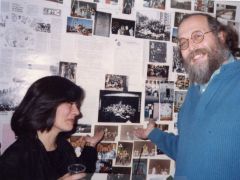



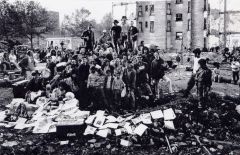
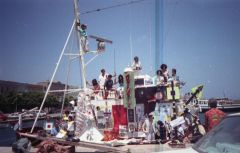
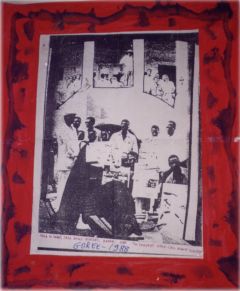
1988 PLEXUS MANIFESTO ART SLAVERY, HOUSE OF THE SLAVES, GOREE-DAKAR
As result from this deconstruction a large quantity of images and texts it was produced which may seem disconnected but instead very interconnected as frames of references of other references, direct verbal and pictorial quotations to be accounted in a proper interpretation (Then a photograph may actually contain a duplicate of a second photograph; and the first, if it also refers to the second through showing it as in a frame, etc., might then be said to quote it directly
The reading of a Plexus Can raises the problem of measuring an object /subject that is still evolving in non-linear movement and is not in equilibrium.
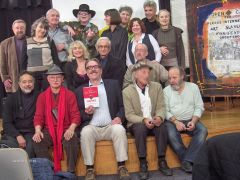
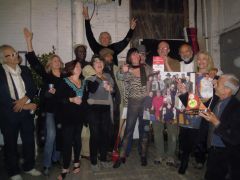

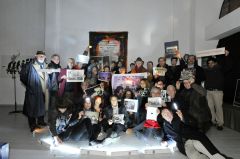
Photos by Anna Marceddu

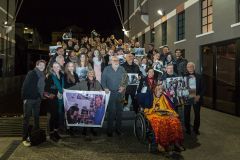
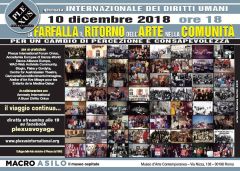
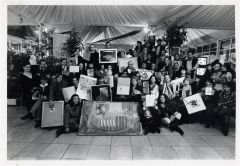
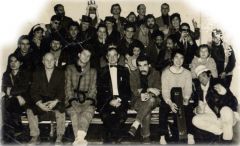
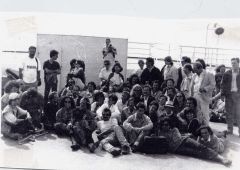
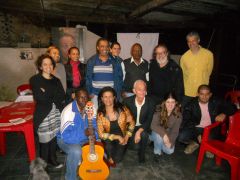

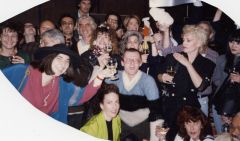

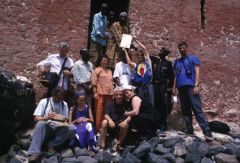
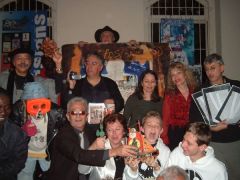
Th 1988 Plexus Art Slavery Group Shot Manifesto Roma, Metateatro became the Plexus compressionist fractal frame.
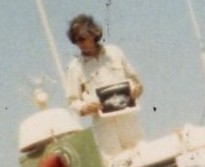
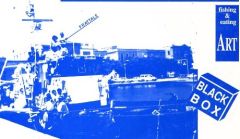
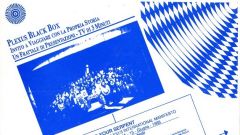
The reading of a Plexus Can raises the problem of measuring an object /subject that is still evolving in non-linear movement and is not in equilibrium, made by frames of frames of Plexus art references, like a Plexus fractal.

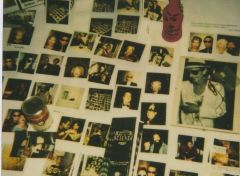
The Plexus group photo compressionist process actually contains duplicates of other group photos, which contain duplicate of other photos of Plexus historical art journey, which contains other photos,and again and again... other frames to be decoded in an endless Plexus recalling process.
With a message to be coded and decoded in an endless process of description. As a serpent eating its own tail, A Plexus Can is transforming itself in the process.
The interpretation of its pictorial representation has gradually shifted from the object to the subject. What is seen depends upon who is looking at it.
WHO IS THE OBJECT? WHO IS THE SUBJECT?


SHIFTING NOW: Who is the subject?
and who is now the object?
To start to answer to these questions, I applied lessons from my 1988 NYU Literature and the Arts course, in which the Alain's drowing came out as my main frame of reference to understand and to learn on how art was tought in the art schools to be studied and applied by future artists and art professionals.

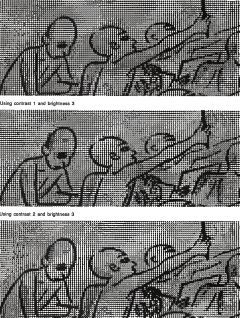

From 1988 to 2024, I created several art installations with the 100 original Campbell's Soup Cans, with forms of Pyramids, reppresenting the Art Stars System, and Nuragic Towers, repprenting the Art Community.
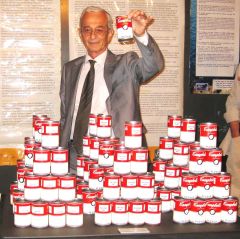
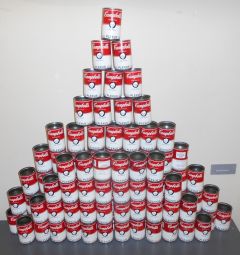

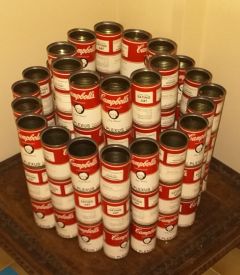
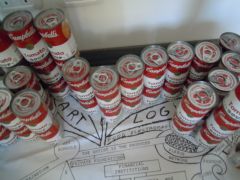


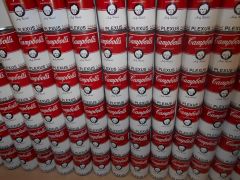
What you feel and see is your own creation…We are called PLEXUS.
"Mytho-Compressionism”.
We have extended the compass of vision to include the former observer as participant. We are user friendly. Use us or lose us.
We are all independent thinkers and dreamers collating our collective visions collaboratively.
Please experience us wisely and with an open heart.
This is open ART.

(Leonard Horowitz, 1986,New York)

